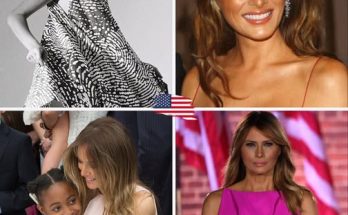In a world where appearances often speak before words do, style becomes more than fabric and stitching—it becomes a language. Every outfit, accessory, and hairstyle communicates something about the person wearing it. While many see fashion as fleeting or superficial, true style transcends trends and reflects individuality, inner strength, and even a person’s worldview.
As Coco Chanel once famously observed, “Fashion passes, style remains.” Her words remind us that trends may come and go, but the way a person presents themselves has lasting power. For women especially, style has historically been one of the most expressive and transformative tools for self-definition. It is not only about external beauty but also about identity, confidence, and authenticity.
Style as a Mirror of Personality
First impressions are often shaped before a single word is exchanged. Clothing choices, colors, and the way someone carries themselves all communicate subtle signals. In this way, style functions as a mirror of personality.
-
A classic blazer paired with tailored trousers may suggest professionalism, structure, and authority.
-
A flowing, floral dress might indicate creativity, warmth, and sensitivity.
-
A bold, experimental outfit with vibrant colors and unusual patterns can suggest independence, innovation, and courage.
Fashion psychologists emphasize that people often choose outfits not just for appearance, but also to project traits they want others to notice. Someone may wear dark tones to project seriousness, or bright colors to uplift their mood. Clothes become a psychological tool—helping individuals control both how they feel and how others perceive them.
The Harmony Between Inner and Outer Beauty
True style is never only about what the eye can see. It is about harmony between inner personality and outward presentation.
When a woman feels comfortable in her chosen look, her confidence radiates naturally. The beauty of authenticity cannot be replicated with expensive brands alone—it is born from alignment between personal values and external expression.
For instance:
-
An introverted woman may gravitate toward neutral palettes, structured lines, and minimalist jewelry that reflect her calm nature.
-
An outgoing, adventurous personality may feel drawn to striking accessories, playful textures, and daring combinations that embody her energy.
In both cases, the style is powerful not because it follows trends, but because it aligns with the wearer’s inner truth. This is why two people can wear the same outfit and project entirely different impressions—style lives in the synergy of clothing, personality, and presence.
Fashion Trends vs. Timeless Style
Trends come and go like waves—oversized jackets one season, micro-bags the next. Social media accelerates this cycle, making some looks viral for weeks before fading into irrelevance. But style stands apart from this constant change.
Coco Chanel’s timeless philosophy reminds us that while fashion captures attention temporarily, personal style creates a lasting memory. Audrey Hepburn’s black dress in Breakfast at Tiffany’s is celebrated to this day not because it was trendy in the 1960s, but because it embodied simplicity, elegance, and timeless grace.
Women who understand their personal style are not bound by seasonal rules. They selectively borrow from trends, incorporating elements that enhance their signature look while ignoring those that feel inauthentic. This balance between adaptation and self-consistency is what makes style enduring.
Exploring Different Styles
While style is personal, experts often categorize it into broader archetypes to help women identify what resonates most with them. Here are some of the most recognized categories:
-
Classic Style – Structured, polished, and timeless. Think neutral colors, pearl accessories, and clean lines. Communicates stability and confidence.
-
Business Style – A more formal version of classic, ideal for professional settings. Blazers, tailored dresses, and minimal jewelry show authority and discipline.
-
Chanel-Inspired Style – A blend of elegance and comfort with tweed jackets, monochrome palettes, and understated sophistication.
-
Romantic Style – Pastel tones, lace, ruffles, and floral prints. This style conveys tenderness, creativity, and openness.
-
Sporty Style – Casual, practical, yet chic. Sneakers, joggers, and athleisure outfits showcase energy and an active lifestyle.
-
Avant-Garde Style – Bold, artistic, and unconventional. Dramatic silhouettes and experimental designs reflect courage and individuality.
-
Folklore Style – Inspired by traditional and cultural motifs. Embroidery, natural fabrics, and heritage patterns show authenticity and pride in one’s roots.
-
Fantasy Style – Whimsical, dreamy, and influenced by imagination. Flowing fabrics, mystical jewelry, and dramatic tones channel creativity and playfulness.
-
Diffuse or Eclectic Style – A mix of influences with no strict theme. It reflects open-mindedness and adaptability.
-
Glamour Style – Luxury fabrics, sparkling details, bold makeup, and statement accessories. Signals confidence, wealth, and charisma.
Identifying a style type can help women refine their wardrobe, but true elegance often lies in blending categories to express individuality.
Why Style Matters More Than Ever
In today’s digital era, where social media platforms shape perceptions instantly, style has become a form of personal branding. A single photograph shared online can influence how thousands—or even millions—perceive someone.
-
Professionals use polished style to build credibility and authority on platforms like LinkedIn.
-
Influencers and entrepreneurs use fashion as a storytelling tool, creating visual consistency that strengthens their brand identity.
-
Celebrities often collaborate with stylists to ensure their image reflects the values they wish to project, from relatability to luxury.
Even outside the public eye, style plays a role in daily interactions. Whether at a job interview, networking event, or social gathering, the way someone presents themselves often sets the tone for opportunities, relationships, and trust.
Style and Confidence: The Psychology Behind Clothing
Psychologists use the term “enclothed cognition” to describe how clothing affects not only how others perceive us but also how we feel about ourselves. Clothing becomes a psychological trigger:
-
A tailored suit can enhance feelings of authority and professionalism.
-
Bright colors can lift mood and encourage positive interactions.
-
Comfortable yet stylish clothing can create a sense of security and freedom.
When a woman feels aligned with what she is wearing, her posture changes, her smile becomes more natural, and her self-assurance grows. In contrast, wearing something that feels forced or inauthentic often creates discomfort, no matter how fashionable it may appear.
The Cultural and Historical Role of Style
Across history, style has carried deep cultural meanings. Clothing has often symbolized status, belonging, and resistance.
-
In the 1920s, flapper dresses symbolized rebellion against restrictive gender norms.
-
In the 1960s and 70s, colorful, free-flowing outfits reflected social movements advocating freedom and equality.
-
In modern times, sustainable fashion movements reflect growing awareness of environmental responsibility.
Thus, style is not only personal but also a reflection of society’s values and transitions. It tells stories about identity, heritage, and progress.
Practical Tips for Developing a Personal Style
For women seeking to refine their look, here are a few actionable strategies:
-
Know Your Colors – Experiment with tones that highlight your natural complexion, eye color, and personality.
-
Prioritize Comfort – Style should never come at the expense of ease. Authenticity requires comfort.
-
Invest in Staples – A well-fitted blazer, quality shoes, and neutral accessories never go out of fashion.
-
Express Individuality – Use accessories or unique touches to make even simple outfits reflect your character.
-
Avoid Blind Trend-Chasing – Choose trends selectively. Adopt only those that align with your personality and values.
-
Reflect Your Lifestyle – A busy mother may prioritize practical chic, while a corporate professional may emphasize structure and polish.
By following these principles, anyone can create a wardrobe that feels both personal and timeless.
Conclusion: Style as a Form of Empowerment
Style is more than what meets the eye. It is an expression of personality, a tool for confidence, and a reflection of both individual and cultural identity. While fashion cycles change, authentic style remains powerful because it is rooted in truth.
Every choice—from the cut of a jacket to the color of lipstick—tells a story. It speaks not just to the outside world but also to the inner self, reminding us of who we are and what we stand for.
In today’s fast-paced, image-driven society, cultivating style is not about vanity—it is about empowerment. It is about embracing uniqueness, celebrating individuality, and presenting oneself with pride and confidence.
As trends shift, one truth remains: style is eternal, and those who discover their authentic expression will always shine.



